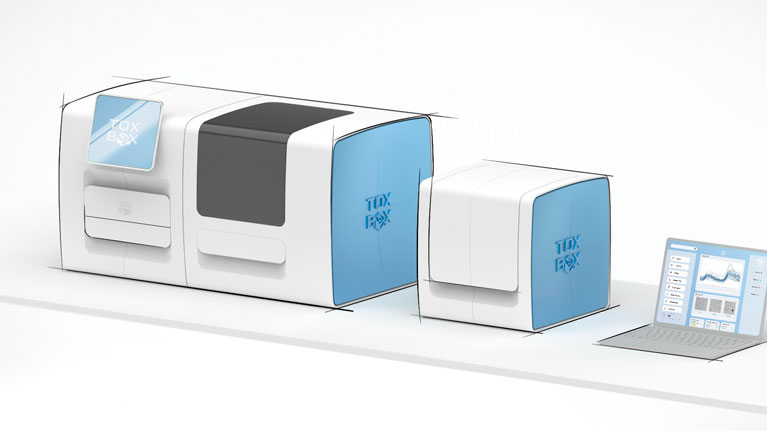An innovative device to evaluate the toxicity of new materials and promote a safe and sustainable design
The Tekniker technology centre is currently helping to develop a system to serve as an alternative to traditional toxicological analysis methods. The solution follows European Commission recommendations related to intensifying tests focused on studying how new chemical products affect health and the environment.

Starting in 2022, the European Commission has promoted innovation and research aimed at developing new chemicals and materials that are safer and more sustainable. The aim of the SSbD concept (Safe and Sustainable by Design), implemented via the Joint Research Center (JRC), is to minimise the use of potentially hazardous substances for production purposes and reduce their impact on health, climate and the environment.
It is in this context that the Basque technology centre Tekniker, a member of the Basque Research and Technology Alliance (BRTA), joined the European TOXBOX project in 2024 to facilitate the implementation of the SSbD concept in the development of a cutting-edge device specifically designed to optimise toxicological tests carried out with these chemical substances in line with international regulations.
The ultimate goal is to support safe and sustainable production practices to ensure that human health and the environment are protected.
“Gemma Mendoza, a Tekniker researcher, explains that current toxicity evaluation methodologies are mainly based on in-vivo studies with animals that are frequently unable to fully assess toxicity throughout the entire life cycle of a chemical substance, more so in environmental contexts.”
These traditional methods, moreover, take longer, cost more and lack the resilience required to meet multiple needs associated with modern tests.
Based on this scenario, the TOXBOX project provides an innovative alternative originating from another prototype developed under the PANBioRA initiative funded by the European H2020 programme.
In order to guarantee a safer and more sustainable approach, Tekniker will perform a detailed analysis of the proposed design to identify and prioritise the most suitable solutions from the earliest development stages. Subsequently, the final design will be evaluated pursuant to the SSbD framework established by The European Commission and eventually be compared with the previous prototype.
Mendoza also underscores that “our mission is to guide all project partners to incorporate safety and sustainability criteria in the device’s design and development process”.
Cytotoxicity or genotoxicity studies
This modular and ergonomic device currently under development has been designed for use in laboratories to detect and measure the presence of toxins and other potentially hazardous chemicals. The main tests to be included will focus on cytotoxicity, genotoxicity, tissue barrier evaluations and environmental simulations.
For example, the cytotoxicity test evaluates whether a chemical substance either damages or kills living cells. The genotoxicity test, moreover, is used to ascertain whether a compound can harm DNA and eventually produce mutations and even cancer”.
The evaluation of tissue barriers looks into how chemicals cross biological structures such as skin, liver or lung barrier to determine their uptake and effects on the body. Lastly, an environmental simulation replicates real conditions to see how chemicals interact with the environment by evaluating their persistence, degradation and toxicity.
Tekniker will also perform aquatic ecotoxicity tests on a number of selected substances including nanoparticles, biocides and endocrine disruptors to validate the toxicity models developed for the TOXBOX team.
The ultimate goal of the solution is to offer objective and reliable toxicity information by means of data to develop accurate IT models and facilitate decision making on how chemical products should be used throughout their entire life cycle.
Thanks to a specific microfluidic architecture, the TOXBOX platform integrates 3D biological tissue models such as skin-on-chip, lung-on-chip, liver-on-chip or zebrafish embryos, together with sensors to evaluate the toxicological effects of pollutants in a physiologically-relevant way. The microfluidic architecture is developed in a modular approach to enhance the versatility of the solution to address different types of pollutants throughout their life cycle.
The initiative has 7 million Euros in EU funding and consists of 16 Europe-based partners, including Tekniker, and is led by Spartha Medical as the scientific coordinator and the Steinbeis centre playing the role of administrative coordinator.
This project has received funding from the European Union’s Horizon Europe research and innovation programme under grant agreement N. 101138387.
